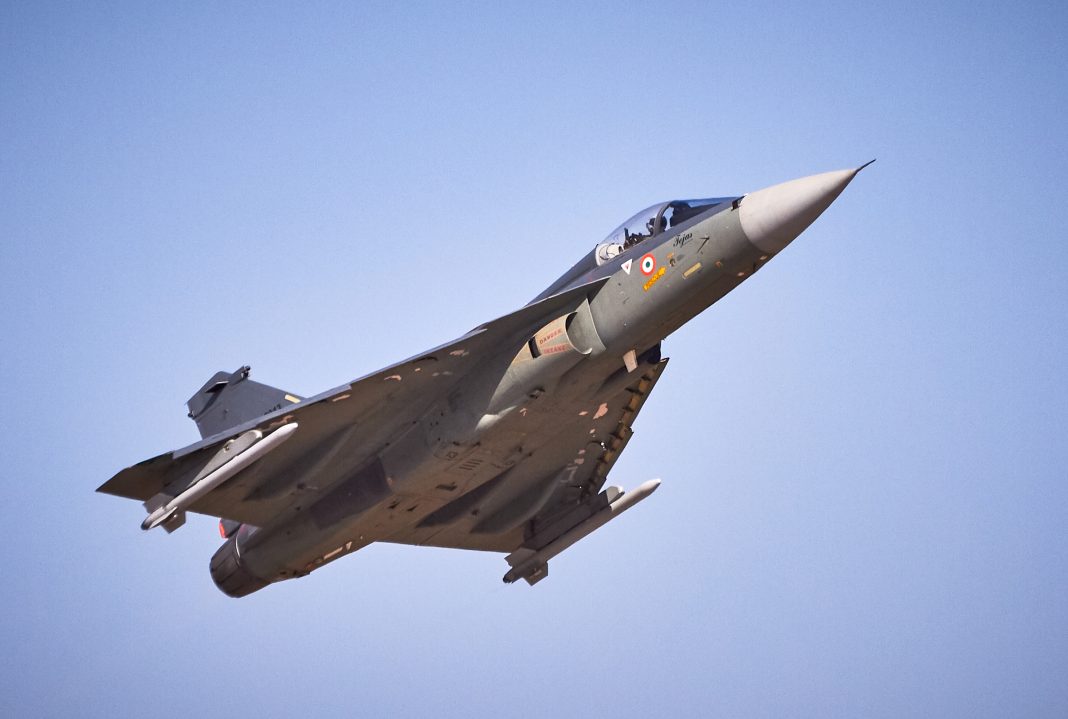The Hindustan Aeronautics Limited (HAL) Tejas Mk1 received Final Operational Clearance (FOC) earlier this year during Aero India 2019. Though, this was a watershed moment for the Tejas program, it was however the first part of the FOC process, signifying the finalization of structural design. Software updates to the aircraft are a constant process though. In fact, 14 such updates from the FOC standard have already been ported to the Initial Operational Clearance (IOC) standard aircraft which have entered service with No.45 Squadron at the Indian Air Force’s (IAF) Sulur Air Force Station (SAFS). As such, the FOC process will continue over the next 18 months. Along with 16 FOC standard aircraft, which are already under various stages of building, some eight production standard trainer aircraft are also to be manufactured and supplied to the IAF. Drawings for the manufacture of these trainer aircraft have were received by HAL in July 2019 itself. These trainer aircraft will be capable of aerial refuelling and enter squadron service when ready.
Recent developments with respect to the Tejas Mk1’s capability development
Lack of inert ammunition had kept gun-firing trials for the Tejas Mk1 in abeyance even though the corresponding software ‘patch’ had been ready for a while. Having received the said ammunition recently, the Aeronautical Development Agency (ADA) will begin firing trials early next year. Though, ADA says ‘air to air’ gun firing against a moving target is a challenging task, it does not foresee any great hurdles in completing this test point given the availability of experienced pilots overseeing the process at the National Flight Test Centre (NFTC),
Meanwhile, the design of dual carriage pylons for carrying missiles as well as a jammer pod on a single underwing station is complete. Also, a fully capable flight simulator is being built at SAFS and will become operational in 12 months’ time, thereby remedying one of the gaps pointed out in a Comptroller and Auditor General (CAG) report on the LCA program. Pilots entering 45 Squadron currently train at a simulator at located at ADA, Bengaluru. As such, with squadron service generating high sortie rates, valuable feedback from the IAF is helping fix teething issues in design and manufacturing.
In its report, CAG had also pointed out that a serious lack of coordination was one of the major deficiencies in the management of the LCA program. This was however mitigated by the setting up a committee in 2006 to monitor the progress of the programme with frequent reviews. Today, the program is overseen by a 17 member Project Monitoring Team (PMT) headed by an IAF Officer of Air Marshal rank. NFTC with its 10 experienced pilots also provides valuable inputs to the designers. Maintenance engineers in the PMT as well as personnel from HAL who participate in reviews also provide valuable feedback to the designers to tailor their designs for easier maintenance. Overall, these design-level interactions between the IAF, ADA and HAL are helping refine all fighter aircraft programmes in India, with under development designs even helping upgrade designs closer to production.
For example, apart from structural changes, the HAL Tejas Mark 1A, for which an order of 83 units is soon expected from India’s Ministry of Defence, will feature changes derived from the AMCA and MWF programs. The Tejas Mk-1A will for instance feature a revamped Digital Flight Control Computer (DFCC) besides incorporating various new Line Replaceable Units (LRUs). While the earlier DFCC was based on the 386 series processor, the new DFCC will feature PowerPC based computing architecture. This dramatically improves computing performance. While the MkI required 24 physical connectors, the newer version would be a press-fit mechanism drastically reducing maintenance overhead.
On engine development
Now as is known, the entire Tejas Mk1, Mk1A and Mk2 i.e. MWF fleet will be equipped with General Electric F404 and F414 series engines. The Kaveri programme has as such failed to deliver a viable domestic engine that can meet the thrust requirements of even the Mk1. Although, the Gas Turbine Research Establishment (GTRE) has been able to achieve the targeted dry-thrust in the Kaveri engine it has not been able to meet the wet-thrust requirement. Presently, efforts to make use of single-crystal turbine blades developed by Defence Metallurgical Research Laboratory (DMRL) as well as research into afterburner design is underway at GTRE to ‘fix’ the Kaveri design. Unless, an indigenous engine becomes available when it does, there is currently no plan to develop alternate engine sources for the fleet.
© Delhi Defence Review. Reproducing this content in full without permission is prohibited.
































